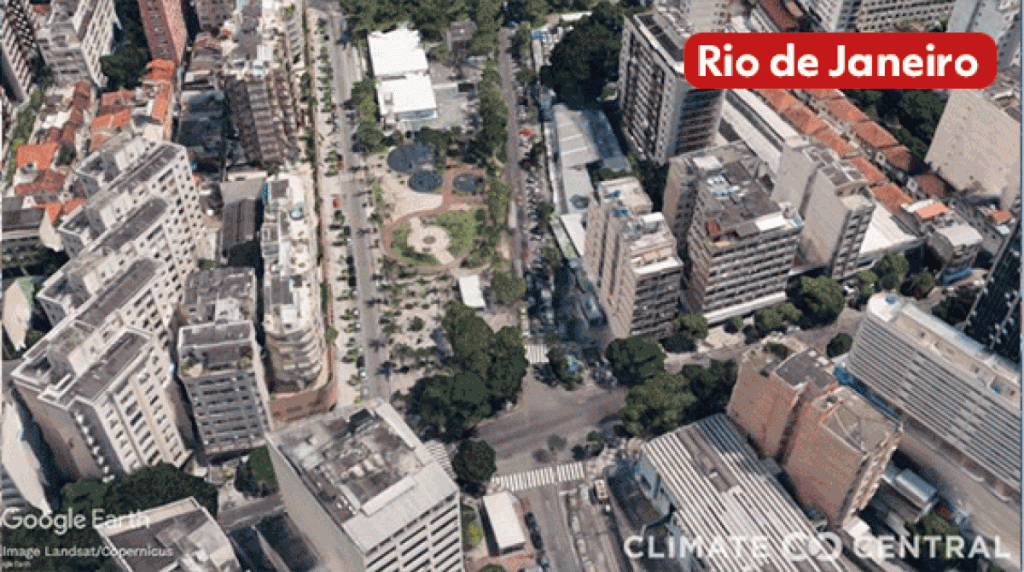Measuring and presenting the impact of rising global temperature and sea level rise was the subject of a survey conducted by Climate Central, a US-based non-profit organization, in partnership with Princeton University and the Potsdam Institute for the Study of Climate Impact in Germany. .
Work published in the journal Environmental Research Letters identified regions of the world that could be subject to “unprecedented” flooding if policies to combat climate change are not now put in place by countries.
Below, see examples of Climate Central’s forecasts for some Brazilian cities:
Salvador, Elevador Lacerda region
Seeing Salvador in the current panorama – Photo: Climate Central / Publishing
Simulation of Salvador looking at a 1.5°C temperature increase – Photo: Climate Central / Publishing
Simulation of Salvador considering a 3°C temperature increase – Photo: Climate Central / Publishing
Recife, view from the Casa Amarilla district
Recife, view from the Casa Amarilla district, current situation – Photo: Climate Central / Divulgação
Recife, seen from the Casa Amarilla region, projecting as temperature increases by 1.5°C – Photo: Climate Central/Publishing
Recife, seen from the Casa Amarilla area, projecting as the temperature rises by 3°C – Photo: Climate Central/Publishing
Fortaleza, Mucuribe Lighthouse District
Fortaleza, Mucuripe Lighthouse region: Current Status – Photo: Climate Central / Disclosure
Fortaleza, Mucuripe Lighthouse region: Drop by 1.5°C n – Photo: Climate Central / Disclosure
Fortaleza, Mucuripe Lighthouse region: Drop by 3°C – Photo: Climate Central / Disclosure
Porto Alegre, Usina do Gasômetro
Porto Alegre, Usina do Gasômetro: current situation – Photo: Climate Central / Disclosure
Porto Alegre, Usina do Gasômetro area: projection as temperature rises by 1.5°C – Photo: Climate Central/Publishing
Porto Alegre, Usina do Gasômetro area: temperature projection at 3°C - Photo: Climate Central/Publishing
Rio de Janeiro, Botafogo station area
Rio de Janeiro, Botafogo station area: current panorama and 1.5°C increase – Photo: Climate Central / Disclosure
Rio de Janeiro, Botafogo station area: 3°C global temperature increase expected – Photo: Climate Central/Disclosure
According to researchers, the worst increase in temperature (up to 4 degrees Celsius) can cause the sea to invade the territories occupied by up to 15% of the current world population, which is equivalent to about one billion people.
On the other hand, achieving the more ambitious targets of the Paris Climate Agreement is likely to halve exposure, the scientists say.
Floods, snow and extreme heat: How climate change is affecting the planet

“Music fanatic. Professional problem solver. Reader. Award-winning tv ninja.”



![[VÍDEO] Elton John’s final show in the UK has the crowd moving](https://www.tupi.fm/wp-content/uploads/2023/06/Elton-John-1-690x600.jpg)


More Stories
A South African YouTuber is bitten by a green mamba and dies after spending a month in a coma
A reptile expert dies after a snake bite
Maduro recalls his ambassador to Brazil in a move to disavow him and expand the crisis